All images courtesy of Getty Images

By Andrew Daly
andrew@vinylwriter.com
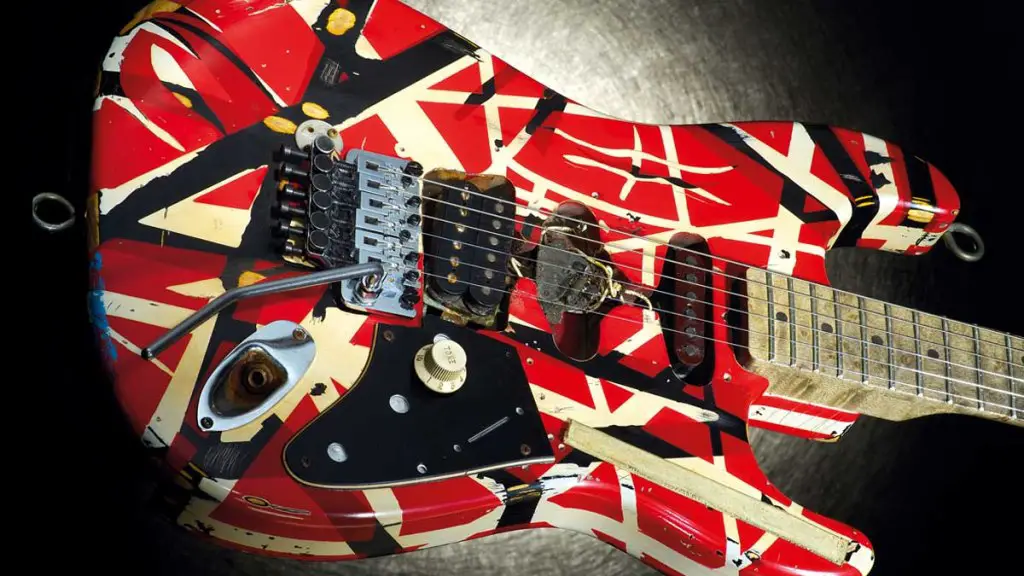
The 1980s was a particularly fascinating time in Hard Rock and Heavy Metal history. It was a decade of over-the-top decadence in terms of style, showmanship, and musicianship. Now, when talking about, or debating the all-important position of lead guitarist, you had a myriad of players who had an uncanny and innate ability to race up and down the fretboard in a style popularized by the late, great Eddie Van Halen. In a decade defined by true Rock ‘N’ Roll excess, the stylings of the decade’s “Guitar Heros” were no exception, but rather subject to the rule.
With that being said, there were a great many guitarists of this era who chose a more traditional, “meat and potatoes” route. These players did not pale in comparison to their more flamboyant counterparts in terms of ability or songsmanship, but perhaps did suffer from a lack of exposure, and thus a lack of recognition for their equally transcendent efforts.
Yes, these were players paying tribute to their 60s, and 70s influences, with a commitment to serving the song, rather than their ego. In a time such as the 1980s Hair Metal era, this was no easy feat. And so, what follows will be 5 lead guitarists who I personally feel are severely underrated in respect to their efforts, talent, and legacy.
When talking about an era of supposed “Rock Gods,” we often pay a tremendous amount of attention to the most glamourous of the bunch. Today, it’s time that we give the building blocks, the proverbial foundational players their due. With that said, let’s get started.

5) Janick Gers of Iron Maiden
It’s well known that stalwart Britsh Heavy Metal outfit, Iron Maiden features an outstanding trio of lead guitarists. When asked about it, most fans will pay most of their attention to original member Dave Murray, and long-time member Adrian Smith, who jointly and ably held down the post of lead guitar for Iron Maiden during their 1980s heyday. During that period, Janick Gers was cutting his teeth with indie Metal bands such as White Spirit, Gillian, and Gogmagog. It wasn’t until 1989 that Janick fell onto the Iron Maiden radar when he was asked to record the initial version of “Bring Your Daughter…To The Slaughter,” along with Maiden vocalist Bruce Dickenson for the film A Nightmare on Elm Street 5: The Dream Child. While that truly unnecessary sequel may be rather forgettable, it was still the entry into stardom that Janick Gers had been waiting for, and had long deserved. Janick officially joined Iron Maiden in 1990 after Adrian Smith departed the group, and dutifully and skillfully held the position down alongside Dave Murray for nearly a decade. In 1999, Adrian Smith returned to Iron Maiden, but Janick Gers remained, thus birthing Maiden’s now-legendary trio of infinitely skilled lead guitarists. Holding down the fort with Iron Maiden is no walk in the park. With complex, and sprawling songs such as “Rime of the Ancient Mariner,” “The Clansman,” and “Where the Wild Wind Blows,” it takes more than a one-trick pony to please Iron Maidens demanding and expectant fanbase all the while meeting the band’s lofty and well-established standard of excellence. Janick Gers is a truly skilled player, and one who came out of near obscurity to rise to the challenge with one of the biggest Heavy Metal acts in the world, and he did so during the barren wasteland for Heavy Metal that was the 1990s. That is no easy feat. If you’ve been sleeping on Janick Gers, it’s time to wake up.
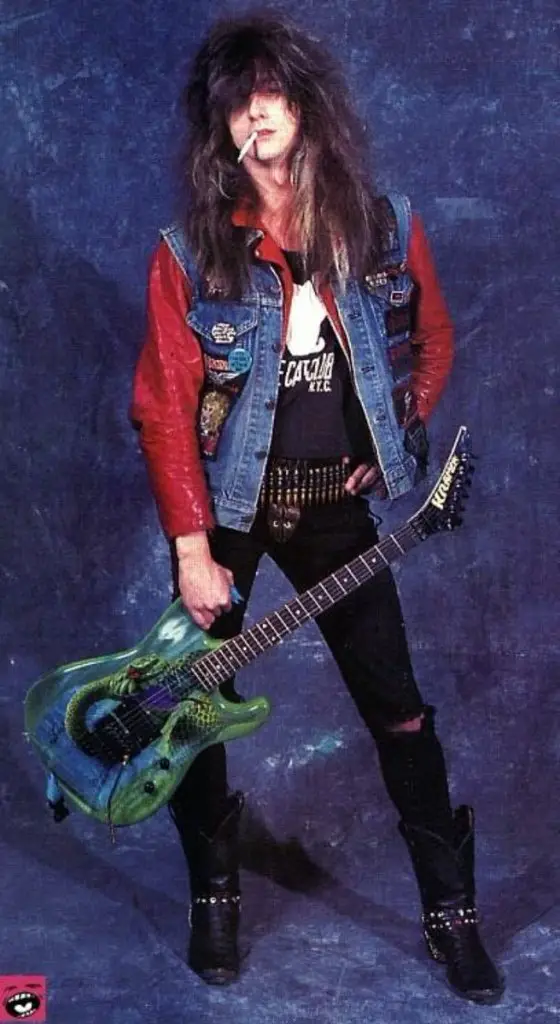
4) Dave “Snake” Sabo of Skid Row
Dave “Snake” Sabo is long established within the American Hard Rock and Heavy Metal scenes. As one of the founding members of the New Jersey-based band Skid Row. Snake Sabo has staked his claim in Heavy Metal history with classic tracks such as “18 and Life,” “I Remember You,” and “Slave to the Grind.” Skid Row’s classic lineup, which featured the talented but enigmatic Sebastian Bach on vocals produced two of the better albums of the latter Hair Metal era in Skid Row and Slave to the Grind. While Bach would, unfortunately, depart Skid Row in 1996, the band has soldiered on making excellent music and touring, with the severely underrated Dave “Snake” Sabo still manning the strings. Snake Sabo is the classic picture of a lead guitarist in every sense of the word. He’s the badass rocker, tattoos up and down his arms, guitar slung low beneath the waist, and a cigarette dangling from the corner of lips. Snake is well known for his skillful yet tasteful shredding as well as his now-iconic solos, all the while churning out crunching, melodic riffs. Snake is the rare case of a player who has the full ability to speed shred with the best of them but also possesses the wherewithal to balance his energy and cater to what the music requires instead of what his ego desires. In 2000, Snake also toured with seminal Thrash Metal band Anthrax, which gave him a chance to stretch out, and truly show his versatility within the genre of Heavy Metal. Rumors of a reunion with Sebastian Bach continue to persist, which Snake steadily denies. Time will tell if the classic Skid Row lineup will ever take the stage again. In the meantime, don’t ignore Dave “Snake” Sabo, less his riffs will slither up your leg, and hit you where it hurts.

3) C.C. DeVille of Poison
Brooklyn native, C.C. DeVille first joined working-class Pennsylvania act turned Glam Metal superstars, Poison, in 1985. For one reason or another, original guitarist Matt Smith wasn’t cutting it, and so original members Bret Michaels, Rikki Rockett, and Bobby Dall set out to find an able replacement, who would be willing to align with their vision of Hair Metal superstardom. In C.C. DeVille, they found their man, but they probably got more than they bargained for, as C.C. was not only a skilled guitarist, and natural songwriter but also a true-blue, dyed-in-the-wool, badass rocker, who couldn’t have cared less about what anyone else thought. This kind of bold and brash attitude has its perks in the world of Rock, but it also has its pitfalls. The signs were readily apparent from day one, and as the story goes, during the day of his fateful audition for Poison, C.C. refused to play any of the band’s songs, and instead would only play riffs, and solos which he had written. While his apparent skill, which was reminiscent of 70s Classic Rock, juxtaposed with 80s pentatonic licks, wild bends, and whammy bar scoops did impress Rikki Rockett and Bobby Dall, Bret Michaels, the band’s singer was unimpressed with C.C.’s brazen attitude, which was a dynamic that would come to define the Michaels/DeVille partnership moving forward. Regardless, he must have done something right that day, as it is said that C.C. beat out the legendary guitar icon Slash for the Poison lead guitar slot. And so, as fate would have it, C.C. did take the mantle of lead guitarist for Poison, and that same riff he played in his very first audition became the basis for a song we all know and love, “Talk Dirty To Me.” DeVille’s natural, and uncanny ability to harness 70s Guitar God energy and funnel it out into unladen 80s firepower is nearly unmatched, and Poison’s success is a testament to that. C.C. would leave Poison in a haze of substance abuse issues, and personality conflicts in 1991, but would return in 1999 after he had cleaned himself up. These days, C.C. DeVille remains a wonderfully able player, with an iconic legacy that both he and Poison pay tribute to during their yearly jaunts around the country. C.C. may be a more mellow version of his once unbridled self, but make no mistake, when he takes the stage, C.C. DeVille still sets the fretboard and audiences on fire like it’s 1985.

2) Bruce Kulick of KISS & Grand Funk Railroad
In an era such as the 80s where glitzy aesthetic won out over understated grace, and sheer speed reigned supreme over congenial methodology there stood another Brooklyn-born player by the name of Bruce Kulick. Now, those who know me are well aware of my love for all things KISS, and it would be easy to say that Bruce is here because he was the lead guitarist of KISS throughout their most successful days in the 1980s, but in truth, there is so much to it than that. For my money, Bruce Kulick is one of the most understated, and underappreciated players of his era. Bruce is an interesting case study, as he managed to fly under the radar even though he was the lead guitarist for one of the biggest bands in the world in KISS. Still, to this day, I’ve never heard any other player translate Hard Rock and Heavy Metal music with so much finesse, feel, and truly melodic tone. Bruce’s natural ability to play complex solos so clearly and coherently, in a truly musical manner astounds me still. One of my favorite things to site regarding Bruce’s talent is that while he may have been handed a cache of 70s KISS-klassics to work with when he joined the band, but Bruce was ever hardworking and earnest. As such, Bruce truly made those songs his own, while still retaining the heart and soul of the already established tunes. Bruce Kulick‘s fierce and inspired playing on albums such as Crazy Nights, Hot in the Shade, and Revenge is some of the most lyrical and technically sound of his era. I’ve had the pleasure of speaking with Bruce twice overtime, and he’s about as good a guy as you’ll meet, never allowing his immense success and God-given gift for the craft of songwriting and soloing to go to his head. Bruce’s Hendrix-inspired meets the 80s style of playing was something that truly was and is entirely all his own. Looking back, what we are left with is an enduring legacy of great music, crafted by a wonderfully gifted yet humble musician. When it comes to Bruce Kulick, the proof is in the pudding. So, you don’t think he’s up there with the likes of the other 80s giants? Well, tell me this, why is it that when the big bands need a hired gun, Bruce seems to be the guy they call? Over time, Bruce has worked with artists such as Meat Loaf, Billy Squire, KISS, Grand Funk Railroad, and more. He’s also been a member of his own bands Blackjack, and Union, and has put out several hard-hitting solo records. If you think Bruce Kulick doesn’t belong in the “great guitar players conversation,” think again.

1) Tommy Thayer of Black ‘N Blue & KISS
Tommy Thayer has had an interesting career trajectory. In the 1980s, Tommy was a truly unsung guitar hero with the criminally underrated band Black ‘N Blue. As one of the founding members, alongside his lifelong friend and cohort, Jaime St. James, they put out four truly outstanding albums between 1984 and 1989 before Black ‘N Blue came to an end. In retrospect, it’s mind-boggling how both Tommy and Black ‘N Blue could have been so overlooked seeing as they had it all in an engaging, energetic frontman in Jaime St. James, and a truly badass Rock ‘N’ Roll guitar player in Tommy Thayer. I suppose, you can be in the right place, at the right time, and have all the ingredients and still not hit the mark. In any event, in the late 80s, Gene Simmons would produce Black ‘N Blue’s two records Nasty, Nasty, and In Heat, and it was here where Tommy Thayer‘s career trajectory truly began to change. These two records were nothing short of a showcase for Tommy’s Blues-inspired turned Metal riffing, which paired perfectly with his penchant for releasing bursts of absolutely vicious and explosive solos over those riffs. I dare anyone to go back and listen to “Nasty, Nasty,” and tell me that Tommy was anything less than a man on fire there. After leaving Black ‘N Blue, Tommy would go on to work with KISS as a songwriter on their Hot in the Shade record and handle the production as well as lead guitar work for Doro Pesch’s Doro album. As the 90s wore on, Tommy stayed within the KISS fold re-teaching Ace Frehley’s his parts when he rejoined KISS in 1996 for the Reunion Tour and even recorded all of the lead work for the group 1998 “reunion” album Psycho Circus as a ghost player, which if you haven’t heard it, you should. For me, knowing that Tommy plays on this truly excellent record only adds to his understated legacy. As the decade turned over into the 2000s, and Ace Frehley departed KISS once again, Tommy finally took his place in the limelight as the official lead guitarist of KISS, a position that he has held down since 2002, making him the longest-tenured lead guitarist in the band’s storied history. Some say that Tommy only, “Plays the part of Ace in KISS,” but the reality is simple– not just any guitarist could fill the void as the lead guitarist of KISS, and Tommy Thayer does it with style, skill, and with respect to the legacy of the band. Like it or not, Tommy Thayer’s own legacy within KISStory is cemented firmly in place. Furthermore, his standing within the anals of Hard Rock and Heavy Metal is sealed as well, seeing as his work with Black ‘N Blue is retrospectively thought of as some of the best and most consistent of its era. Tommy Thayer plays the guitar the way it’s supposed to be played, with heart, soul, and ever-burning respect for the song, coupled with immense skill, and downright ill-tempered, swagger-laden licks. I’ll leave you with this…when I spoke with Black ‘N Blue frontman Jaime St. James, he had this to say about his old friend, “I tell everybody, Tommy is one of my favorite all-time guitarists. And I’ll tell you, I mean, he really has a feel. I mean, the way he can play rhythm and I know the guy can pick up anything, there were a lot of times he would just lay it down and make it look easy. It was great for me because it opened my mind up. I remember singing him riffs that he would just hold it down perfectly. Tommy is a great guitar player. He knows all these chords and is really cool to write with. You know, before I’m done with this life, I’ll write with him again.” If that doesn’t tell you all you need to know, I don’t know what does.
So, that wraps it up. My list of 5 underrated lead guitarists from the 1980s Hard Rock and Heavy Metal era. I realize that while many of you may not agree, I still hope that it inspires a different train of thought or at least some healthy debate. I’d like to add that I have tremendous respect for the shredders such as Vito Bratta, Vinnie Vincent, and Steve Lynch, and I will always have a special love for the talent and work of Eddie Van Halen seeing as the man truly changed the guitar as a device for both riffing and songwriting alike. That said, those players are entirely different animals than the ones I’ve discussed here today. I personally have always been more drawn to guys who pay respect to the song and carry through with a more nuanced, musical, and lyrical style. And you know, who doesn’t like a good underdog story. That’s what’s always suited me, personally. In short, when it comes to the guitar, speak to me with your playing. Send me a message without actually talking to me. I don’t care how fast you can play, or how many notes you can jam in a 30-second solo. Is that impressive from a technical standpoint? Sure. Does it speak to me personally? Not really. Where’s the heart? Where’s the soul? At the end of the day, music is very personal, and different songs, guitarists, and so on will speak to us all in different ways. These are the guys who speak to me, so here they are. The question is, who speaks to you?

– Andrew Daly (@vwmusicrocks) is the Editor-in-Chief for www.vwmusicrocks.com and may be reached at andrew@vinylwriter.com
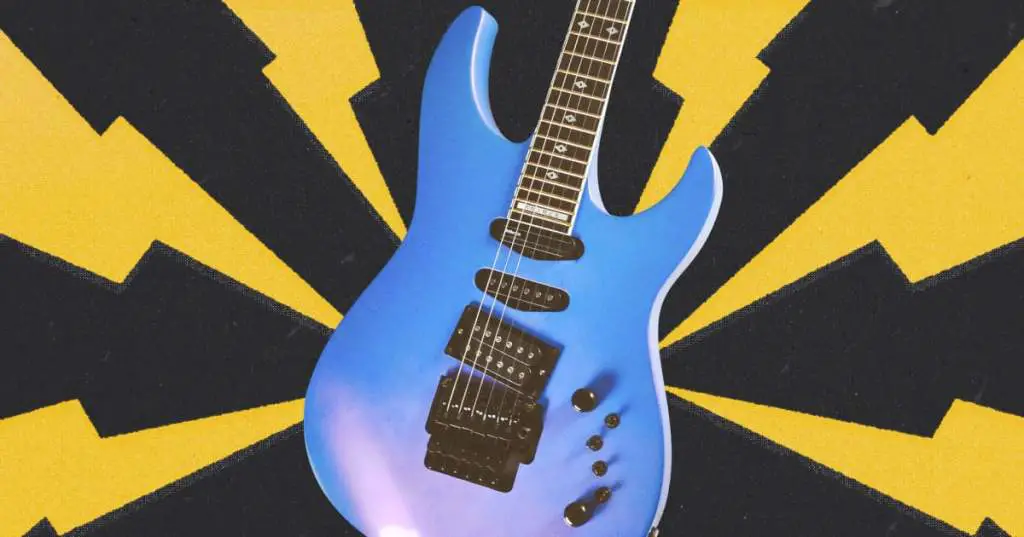


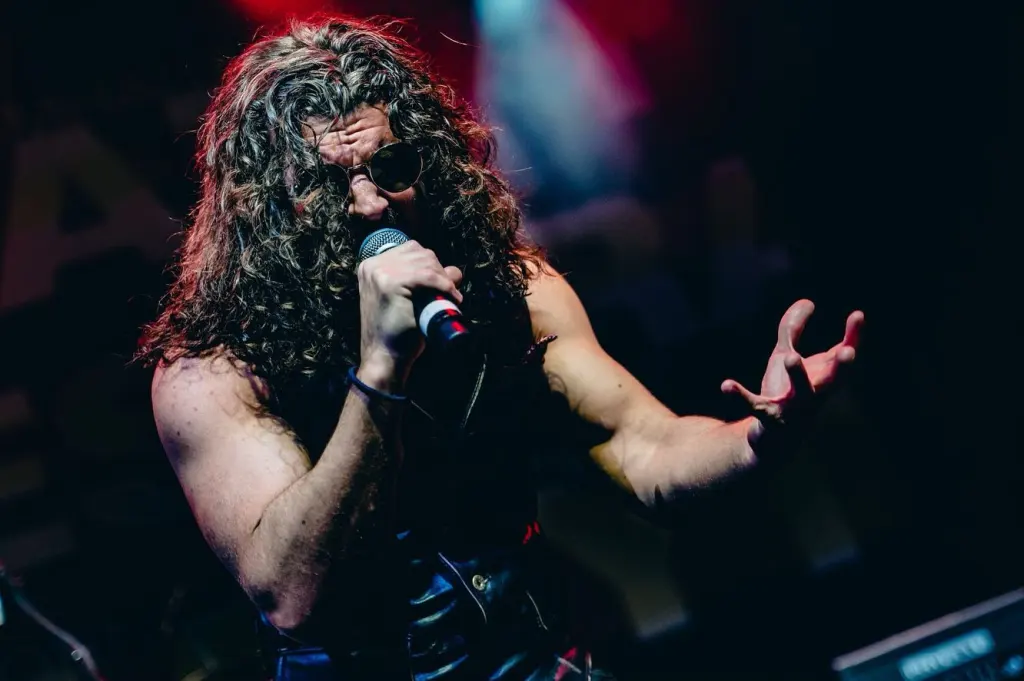
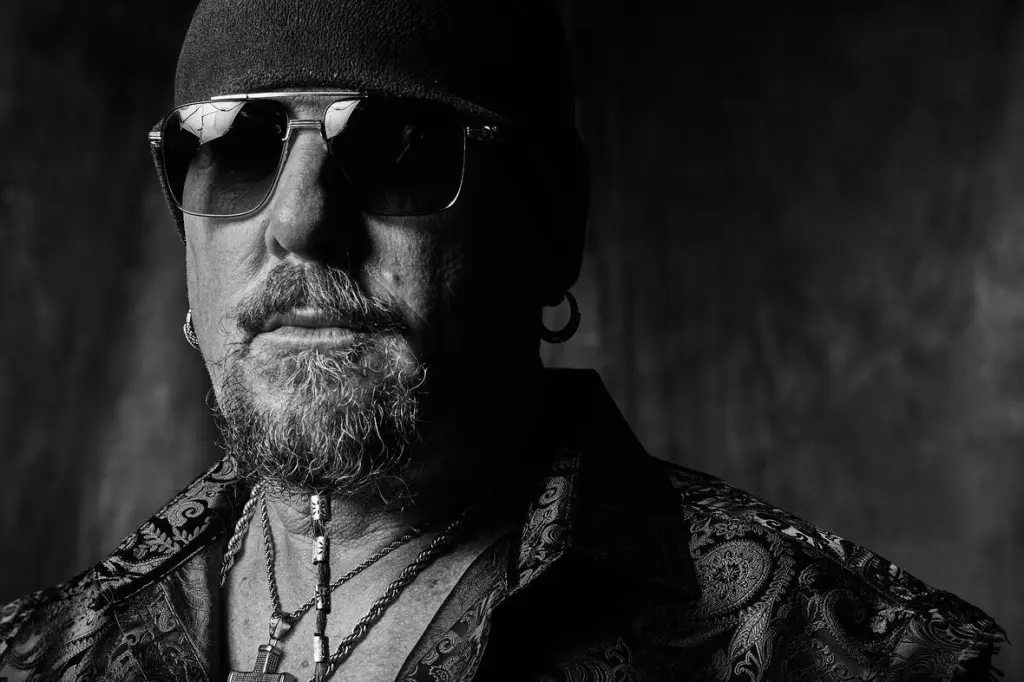
Leave a Reply